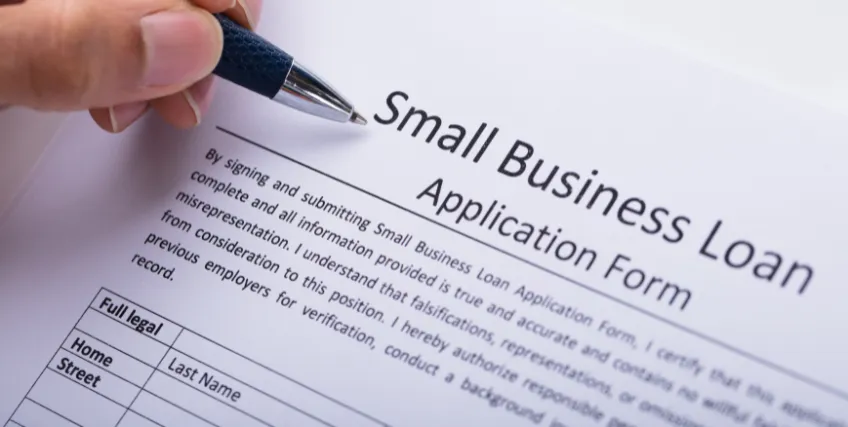Explore Small Business Loans in Texas, Designed for Your Unique Needs
Get flexible repayment terms on loans for small businesses in Texas.
Why Choose Biz2Credit for Small Business Loans in Texas?
The diverse economy of Texas thrives on the success of its small businesses. For years, Biz2Credit has been the trusted choice for entrepreneurs seeking small business loans in Texas. From managing cash flow to expanding operations to purchasing inventory, we provide tailored financing solutions to fuel your success. We have a wide variety of financing options, including business loans in Texas and alternative funding options like revenue-based financing. The latter option is a great alternative for business lines of credit in Texas as it ensures that enterprises across industries have the capital they need, without sacrificing any equity. With a streamlined application process and quick approvals, securing loans for small businesses in Texas is hassle-free. Whether you are exploring loans in Austin or analyzing business loans in Houston, TX, Biz2Credit offers personalized support, flexible repayment terms, and fast funding to empower Texas entrepreneurs. Partner with Biz2Credit for reliable, efficient financial solutions that help your business succeed in the Lone Star State.
Our Strengths:

Simplicity

Specialists

Credit Score
How Business Loans in Texas Can be the Key to Your Success

Explore Small Business Financing Options in Texas
A term loan provides a lump sum of capital, repaid over a set period with fixed installments. It can be used to meet a wide variety of business needs, such as expanding business operations, upgrading equipment, managing cash flow, stocking inventory and even funding marketing campaigns or new projects. With this type of business loan in Texas, you can get upfront funding to fulfill your business goals.
But keep in mind, the repayment commitment requires steady cash flow to meet your obligations. If you have a credit score of below 650 or limited time in business, it may affect your chance of loan approval. In some cases, you may be required to secure your loan with collateral and/or a personal guarantee.
- Fund range: $25K-$1M
- Qualification: Qualify automaticallyⓘ after you submit your application
- Credit Score: 650
- Repayment Term: 12-36 months
Revenue-based financing in Texas is a powerful alternative for small business owners in Texas who need flexible funding options without the rigid terms of traditional loans. Tailored for businesses with variable revenue streams, this financing solution allows you to borrow up to $2 million. Your payment amount is calculated based on a percentage of estimated future receivables. This makes it an ideal option for industries like retail and hospitality, which often experience income fluctuations.
For entrepreneurs seeking small business financing in Texas, revenue-based financing provides quick access to capital to cover essential needs such as purchasing inventory, upgrading equipment, or expanding operations. With minimal requirements and a streamlined application process, businesses in Texas can secure funding without lengthy approval timelines.
Biz2Credit stands out among other financial platforms in Texas by offering speed, flexibility, and solutions that grow with your business. Whether you’ve been in business for just a few years or are an established enterprise, revenue-based financing is designed to empower your goals and help you succeed in a competitive market.
- Fund range: $25K-$2M
- Qualification: Create your Biz2Credit account to prequalify.
- Credit Score: 600+
- Repayment Term: Flexible, based on your revenue
Our commercial real estate loans in Texas are designed to empower small business owners in Texas to expand or invest in property with confidence. Whether you’re looking to purchase a new location, renovate existing facilities, or refinance existing real estate debt, these loans offer the flexibility and capital you need. With funding amounts ranging from $250,000 to $6 million, businesses across Texas can get customized solutions to meet their specific goals.
For those exploring small business loans in Texas, Biz2Credit provides competitive interest rates, streamlined approvals, and repayment terms ranging from 12 to 36 months. This makes it easier for entrepreneurs to secure funding for high-value assets without the stress of lengthy application processes. As a trusted name in the lending industry in the state, Biz2Credit ensures a seamless experience from application to disbursement.
From startups in Austin to established businesses in Corpus Christi, Biz2Credit’s solutions are an ideal choice for those seeking small business loans in Texas that cater specifically to real estate needs. By providing quick approvals and flexible repayment options, Biz2Credit helps businesses navigate the complexities of Texas’s business loans ecosystem while securing the property assets they need to grow. Discover how these commercial real estate loans in Texas can drive your business forward.
- Fund range: $250K-$6M
- Qualification: Submit your application for review
- Credit Score: 650+
- Repayment Term: 12-36 months
Industry-Based Small Business Loans in Texas
Loans in
Texas
Loans in
Texas
Loans in
Texas
Liquor Stores
in Texas
Loans in
Texas
Attorneys
in Texas
for Salons in
Texas
How to Apply for Business Loans in Texas with Biz2Credit?
Simple steps to secure small business loans in Texas with Biz2Credit.

Small Business Loans in Texas Articles
What Texas Small Businesses Need to Know About Emergency Loans
Texas has been hit hard in 2025. Wildfires scorched thousands of acres. Tornadoes ripped through towns.
Facing Storm Damage in Texas? Here’s How to Apply for SBA Disaster Loans
Natural calamities have always been a part of life for most Texans. But, in 2025, tornadoes, straight-line winds, and wildfires have left
Law Firm Loans in Texas: Everything You Need to Know
Starting up your own law firm, then running that firm successfully each year, can be a costly endeavor as a small business owner.
How to Get Gas Station Financing in Texas in 5 Steps
Gas station financing is among the first steps to operating an essential service business. But becoming a gas station owner in Texas (among other states) isn’t as simple as getting a check and opening the doors.
A Complete Guide to Restaurant Business Loans
There are many costs involved with opening and running a restaurant, even in a state like Texas, where business owners operate nearly 57,000 restaurants
How to Get Beauty Salon Equipment Financing in Texas
Texas has the most hair stylist and cosmetology jobs in the USA, according to Bureau of Labor Statistics (BLS) data. So if you want to stop renting a salon station and break out on your own
Texas Law Firm Financing Everything You Need to Know About Law Firm Loans
Law is a competitive field, and many lawyers leave law school to attempt to climb a competitive corporate ladder.
How to fund a women-owned business
Starting and growing a small business is a significant challenge, but women entrepreneurs face unique obstacles that can make it even harder to secure funding.
SBA 504 vs. 7(a) Which Loan Works Better for Your Texas Business
Running a business in Texas often means needing extra funds. Many small business owners look for small business loans in Texas to support their growth.
FAQs on Small Business Loans in Texas
What do I need for a business loan in Texas?
To qualify for Biz2Credit’s business loans in Texas, there are some key requirements you need to meet. Your business should have an annual revenue of at least $250,000, showcasing your ability to manage repayments. A solid business plan is important as it would let us know how the funds will be utilized, whether for expansion, purchasing inventory, or managing operations. For most business loans in Texas, a minimum of 18–24 months in operation is required to establish business credibility and financial stability.
Additionally, you may need to provide collateral or a personal guarantee, depending on the loan type. No matter what type of loan you are seeking, just ensure these prerequisites are met as this will streamline the application process and improve your chances of approval.
Are commercial real estate loans impacted by rising rates and inflation in Texas?
Commercial real estate loans in Texas are highly sensitive to rising interest rates and inflation. Higher rates increase borrowing costs, making it more expensive to purchase or refinance properties. Inflation further impacts profitability by driving up operating expenses like maintenance and taxes.
For businesses seeking business loans in Texas, these factors highlight the importance of choosing flexible financing. Biz2Credit offers customized funding solutions to help businesses manage economic fluctuations and get reliable funding. Whether you’re in need of business loans in Texas for any kind of financial hiccups, Biz2Credit ensures competitive terms to navigate these challenges effectively.
Can Texas businesses use financing to cover oil and energy industry costs?
Energy-related businesses often leverage financing for equipment upgrades, workforce expansion, and compliance expenses.
Does Texas have financing programs for Hispanic-owned businesses?
Texas, with its large Hispanic community, offers dedicated support through state initiatives and business networks.
Can businesses in Texas apply financing toward hurricane or storm recovery?
Many programs support businesses impacted by natural disasters, helping them repair, rebuild, and reopen quickly.
Frequent searches leading to this page
Term Loans are made by Itria Ventures LLC or Cross River Bank, Member FDIC. This is not a deposit product. California residents: Itria Ventures LLC is licensed by the Department of Financial Protection and Innovation. Loans are made or arranged pursuant to California Financing Law License # 60DBO-35839









